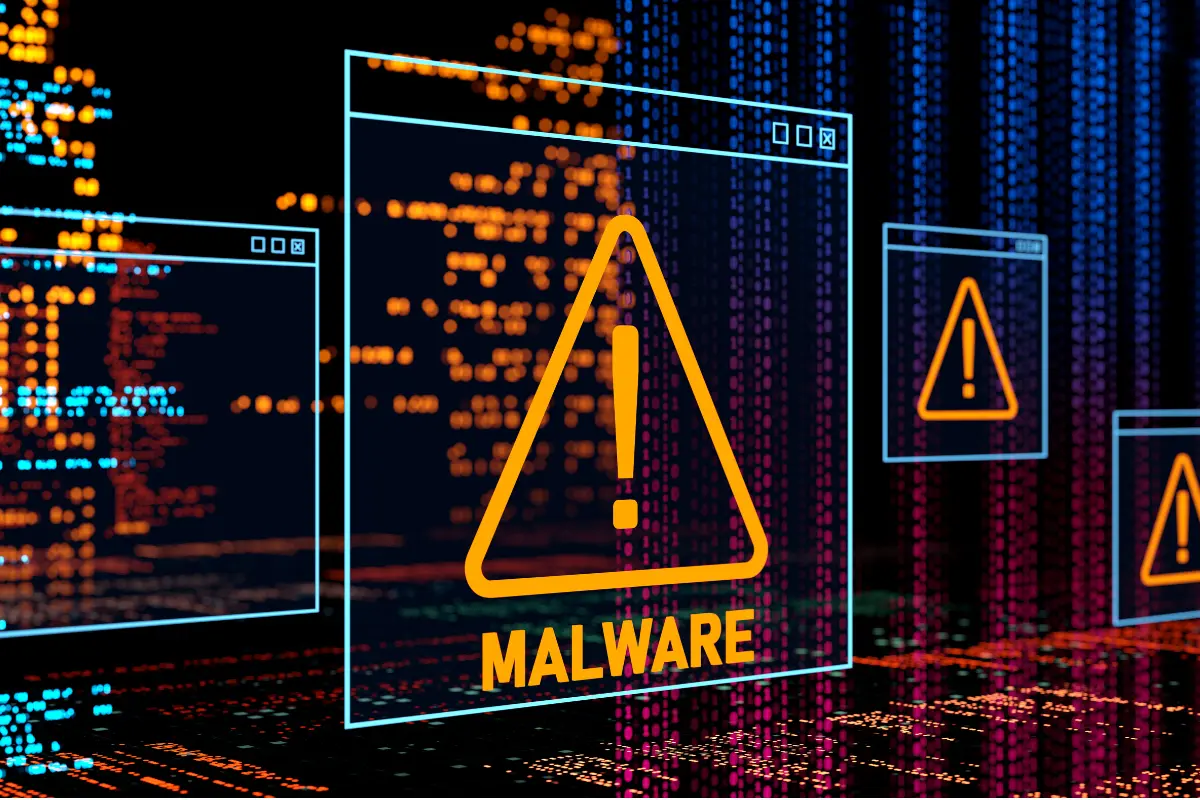The Importance of Endpoint Security in a Remote Work Environment
| No. | Section | Description |
|---|---|---|
| 1 | The Rise of Remote Work and Its Impact on Cybersecurity | Overview of the increase in remote work and how it expands the attack surface for cybercriminals. |
| 2 | Understanding Endpoint Security | Explanation of what endpoint security is and its importance in protecting remote work environments. |
| 3 | Common Endpoint Security Threats in Remote Work | Identification of key security threats, including phishing, ransomware, and unsecured networks. |
| 4 | Best Practices for Ensuring Endpoint Security | Practical strategies such as MFA, EDR solutions, encryption, and regular software updates. |
| 5 | The Role of Zero Trust Architecture in Endpoint Security | Discussion on how Zero Trust enhances security through micro-segmentation, continuous monitoring, and IAM. |
| 6 | The Future of Endpoint Security in Remote Work | Exploration of future trends such as AI, threat intelligence sharing, and enhanced regulatory compliance. |
| 7 | Leveraging Cloud-Based Endpoint Security Solutions | Benefits of using cloud-based solutions for managing and securing endpoints in a remote work setting. |
| 8 | Integrating Endpoint Security with Broader Cybersecurity Strategies | Importance of integrating endpoint security with other cybersecurity measures for a holistic defense. |
| 9 | Addressing the Human Factor in Endpoint Security | Focus on the human element, including security awareness programs, phishing simulations, and fostering a security-first culture. |
#Introduction
In today’s digital landscape, remote work has become a significant trend, accelerated by the global COVID-19
pandemic. While remote work offers numerous benefits, it also
introduces new challenges in maintaining cybersecurity. . That connect to a network, are often the first targets for cyberattacks. As businesses
continue to ensuring robust endpoint security has never been more crucial.
1. The Rise of Remote Work and Its Impact on Cybersecurity
Overview: The shift to remote work has been rapid and widespread. While this shift offers flexibility . It also expands the attack surface for cybercriminals. This makes them prime targets for cyberattacks, including phishing, malware, and ransomware.
1.1 Key Statistics:
- 1.1.1 Cybercrime Costs: A report by Cybersecurity Ventures predicts that cybercrime will cost the world $10.5 trillion annually by 2025.
- 1.1.2 Increased Threats: According to a survey by Cisco, 61% of organizations experienced a jump in cybersecurity threats since the shift to remote work.
2. Understanding Endpoint Security
Overview: Endpoint security refers to the practice of securing individual devices that connect to an organization’s network. These devices, or endpoints, include computers, smartphones, tablets, and IoT devices.
2.1 Key Statistics:
- 2.1.1 Market Growth: The global endpoint security market is expected to reach $18.5 billion by 2027, growing at a CAGR of 8.3% from 2020.
- 2.1.2 Endpoint Attacks: A study by Ponemon Institute found that 68% of organizations experienced one or more endpoint attacks that compromised data and/or IT infrastructure in 2023.
3. Common Endpoint Security Threats in Remote Work
Overview: Remote work environments introduce several unique security challenges. Some of the most common endpoint security threats include phishing attacks, ransomware, unsecured networks, and shadow IT.
3.1 Threats:
- 3.1.1 Phishing Attacks: Remote workers are more susceptible to phishing attacks due to the increased use of email . Cybercriminals often impersonate legitimate organizations or colleagues to trick users into revealing sensitive information.
- 3.1.2 Ransomware: Ransomware attacks have surged in recent years, with attackers targeting endpoints to gain access to critical systems and data.
- 3.1.3 Shadow IT: Employees may use unapproved devices or software for work, leading to shadow IT, where these tools bypass the organization’s security controls, increasing the risk of data breaches.
3.2 Key Statistics:
- 3.2.1 Phishing Prevalence: Phishing attacks account for 90% of data breaches, according to a report by Verizon.
- 3.2.2 Ransomware Costs: A study by Sophos revealed that the average cost to remediate a ransomware attack is $1.85 million.
4. Best Practices for Ensuring Endpoint Security
Overview: To protect your organization’s data and ensure compliance with cybersecurity regulations, it is essential to implement robust endpoint security measures.
4.1 Best Practices:
- 4.1.1 Implement Multi-Factor Authentication (MFA): MFA adds an extra layer of security by requiring users to verify their identity through multiple methods, such as a password and a fingerprint or a one-time code sent to their mobile device.
- 4.1.2 Use Endpoint Detection and Response (EDR) Solutions: EDR tools monitor and analyze endpoint activities to detect and respond to threats in real-time. These tools provide visibility into endpoint behavior, helping organizations quickly identify and mitigate security incidents.
- 4.1.3 Encrypt Data on All Endpoints: Encryption ensures that even if a device is compromised, the data stored on it remains protected.
- 4.1.4 Regularly Update and Patch Software: Keeping software up-to-date is crucial for closing security vulnerabilities that attackers could exploit. Organizations should implement automated patch management to ensure that all endpoints receive updates promptly.
- 4.1.5 Conduct Security Awareness Training: Educating remote workers about the latest cybersecurity threats and best practices is essential for reducing the risk of human error.
4.2 Key Statistics:
- 4.2.1 MFA Effectiveness: According to Microsoft, enabling MFA can block over 99.9% of account compromise attacks.
- 4.2.2 EDR Adoption: A report by CrowdStrike found that 68% of organizations believe EDR is essential for protecting remote workers.
5. The Role of Zero Trust Architecture in Endpoint Security
Overview: Zero Trust is a security model that assumes no user or device should be trusted by default, of whether they are inside or outside the network. In a remote work environment, Zero Trust architecture.
5.1 Key Components:
- 5.1.1 Micro-Segmentation: By dividing the network into smaller segments, organizations can limit the potential damage caused by a compromised endpoint. Each segment is isolated, ensuring that attackers cannot move laterally across the network.
- 5.1.2 Continuous Monitoring: Zero Trust requires continuous monitoring of all network traffic and endpoint activities. This approach allows organizations to detect to threats in real-time, reducing the window of opportunity for attackers.
- 5.1.3 Identity and Access Management (IAM): IAM solutions are a critical component of Zero Trust, enabling organizations to enforce least-privilege access and ensure that users only have access to the resources they need.
5.2 Key Statistics:
- 5.2.1 Zero Trust Adoption: According to Gartner, by 2024, 60% of organizations will have implemented Zero Trust security frameworks.
- 5.2.2 Incident Reduction: A report by Forrester Research indicates that organizations implementing Zero Trust have reduced security incidents by 50%.
6. The Future of Endpoint Security in Remote Work
Overview: As remote work becomes a permanent fixture in the modern workplace, endpoint security will continue to evolve. Organizations must stay ahead of emerging threats by adopting innovative security technologies and practices.
6.1 Emerging Trends:
- 6.1.1 AI and Machine Learning: AI-driven security solutions will play a crucial role in identifying and responding to sophisticated threats. These technologies can analyze vast amounts of data to detect anomalies and predict potential attacks.
- 6.1.2 Threat Intelligence Sharing: Collaboration between organizations and cybersecurity providers will become more critical in combating cyber threats.
- 6.1.3 Enhanced Regulatory Compliance: Governments and regulatory bodies are likely to introduce stricter data protection laws to address the challenges of remote work.
6.2 Key Statistics:
- 6.2.1 AI in Cybersecurity: The global AI in cybersecurity market is expected to grow to $46.3 billion by 2027, according to Markets and Markets.
- 6.2.2 Cost Reduction: A study by Accenture found that organizations using AI and automation in their cybersecurity strategies reduced the cost of breaches by 80%.
7. Leveraging Cloud-Based Endpoint Security Solutions
Overview: As remote work grows, cloud-based endpoint security solutions are becoming increasingly popular due to their scalability, flexibility, and ease of deployment.
7.1 Key Components:
- 7.1.1 Centralized Management: Cloud-based security platforms provide centralized control over all endpoints, enabling IT teams to deploy updates, monitor security statuses.
- 7.1.2 Real-Time Updates: Cloud solutions ensure that all endpoints receive the latest security updates and patches in real-time, reducing the window of vulnerability to new threats.
7.2 Key Statistics:
- 7.2.1 Market Growth: According to a report by Statista, the global cloud-based security services market is expected to reach $20.1 billion by 2026.
- 7.2.2 Multi-Cloud Strategy: A survey by Flexera found that 92% of enterprises have a multi-cloud strategy, highlighting the growing reliance on cloud-based solutions.
8. Integrating Endpoint Security with Broader Cybersecurity Strategies
Overview: Endpoint security should not be viewed in isolation but as a critical component of a comprehensive cybersecurity strategy. Integration with other security measures, data protection, and threat intelligence.
8.1 Key Components:
8.1.1 Unified Threat Management (UTM): Integrating endpoint security with UTM systems . It allows for better coordination between different security layers, providing a more robust defense against sophisticated attacks.
- 8.1.2 Threat Intelligence Sharing: Incorporating threat intelligence into endpoint security can enhance the ability to detect. This integration allows for more proactive security measures, reducing the risk of a successful attack.
- 8.1.3 Collaboration Across Teams: Effective endpoint security requires collaboration between IT, security, and business teams. Ensuring that all stakeholders are aligned on security objectives and practices helps create a cohesive defense strategy.
8.2 Key Statistics:
- 8.2.1 Market Growth: The global unified threat management market is expected to grow from $3.7 billion in 2020 to $6.7 billion by 2026, according to MarketsandMarkets.
- 8.2.2 Breach Cost Reduction: A report by the Ponemon Institute found that organizations with integrated security solutions reduce the average cost of a breach by 26%.
9. Addressing the Human Factor in Endpoint Security
Overview: While technology plays a critical role in securing endpoints, the human factor cannot be overlooked. Human error remains one of the leading causes of security breaches.
9.1 Key Components:
- 9.1.1 Security Awareness Programs: Regularly updated security awareness programs educate employees about the latest threats. These programs should cover topics such as phishing, password management, for work.
- 9.1.2 Simulated Phishing Attacks: Conducting simulated phishing attacks helps employees recognize and respond to real threats. These simulations also allow organizations to identify areas where additional training may be needed.
- 9.1.3 Encouraging a Security-First Mindset: Creating a culture where security is prioritized at all levels of the organization can significantly reduce the risk of breaches. This involves encouraging employees to report suspicious activities and providing them to protect themselves and the company.
9.2 Key Statistics:
- 9.2.1 Human Element in Breaches: According to the 2023 Verizon Data Breach Investigations Report, 82% of breaches involved a human element, including social engineering, errors, and misuse.
- 9.2.2 Phishing Attack Reduction: The SANS Institute found that organizations with robust security awareness programs experienced a 45% reduction in successful phishing attacks.



